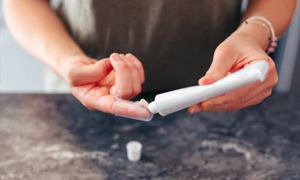Addressing Dental Care At Home - A Combined Approach

Dental disease poses one of the most challenging and frustrating conditions to deal with in veterinary practice. Whether being an initial source of complaint or picked up at a routine vaccination visit, deciding on an appropriate treatment plan and getting the owner on board with realistic expectations and financial considerations can be difficult. Persuading an owner to go down the general anaesthetic route for a scale and polish with any appropriate extractions can be tough enough, but it is important that the owner realises that even with this intervention, on-going home care is essential to maintain dental health or the patient will be back at square one in a short space of time.
Home care for dental maintenance is a massively underutilised preventative measure. It not only acts as a deterrent for the onset of dental disease, but it is beneficial in acclimatising the animal to regular oral examination and on-going dental care; the earlier this is started in the pets’ life, the easier it will be.
Communicating the importance of home dental care requires the veterinary team to take the time to discuss oral healthcare options with owners and assess what will be most appropriate for each individual patient and owner based on a number of factors. For example, it is important to know how compliant an individual owner will be and also to make sure their expectations are realistic. Things to consider include ‘how committed is an owner to a regime?’, ‘are they able to perform physically demanding tasks?’ and ‘how accepting is their pet?’
The gold standard in terms of dental home care is tooth brushing, however, it can also be the hardest and most time consuming to perform. Ideally, daily brushing is advised as anything else significantly reduces efficacy. The benefits of actually brushing teeth is two-fold – the abrasion to remove plaque and inhibition of bacteria through using a suitable product like CET (Complex Enzymatic Thiocyanate) toothpaste, which inhibits the growth of plaque-forming bacteria. Nurse clinics can be invaluable in teaching owners the best method of introducing tooth brushing to their pet from an early age, but as mentioned above, it is also important to identify cases where this may not be achievable and be ready to offer an alternative to owners. Whilst these options may not provide the same results as tooth brushing, their increased ease of use can prevent owners becoming disheartened and simply avoiding all forms of home dental care.
Chlorhexidine rinses, such as Hexarinse are also beneficial and are very easy for pet owners to use. Chlorhexidine is a very effective broad spectrum antiseptic, which although ideally should be combined with mechanical cleaning, also has a beneficial effect with just topical application. Oral rinses provide a less intrusive option for owners whose pets don’t tolerate brushing.
Alongside brushing and oral rinses there is a third choice for owners. Choosing a well-designed, healthy, dental chew can make help to make a difference in the dental health of a pet. The action of chewing helps to strengthen and exercise the periodontal ligament and alveolar bone. Chews such as VeggieDent® FR3SH™ Dental Chews are specifically designed to conform to the tooth’s shape, and help to remove plaque from the teeth. A study of VeggieDent® FR3SH™ Dental Chews showed a 70% reduction in calculus and a 37% reduction in plaque1.
In summary, it is important to show pet owners that dental care can be approached in a multitude of ways and alongside regular dental health checks in clinic, owners can utilise easy to use home care products which help to keep plaque and tartar at bay.
1. Kelman M, Perkins N. Effectiveness of a vegetable dental chew on periodontal disease parameters in toy breed dogs. J Vet Dent. 2011;28(4):230–235.
